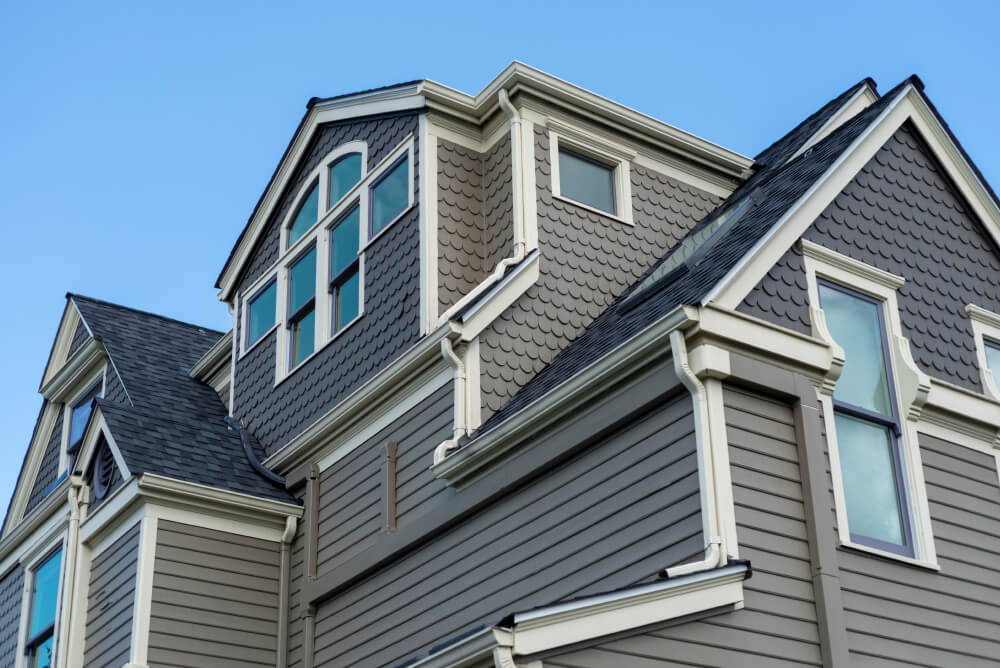1. Fiberglass Insulation
Overview Fiberglass insulation is one of the most common and widely used insulation materials. It consists of fine glass fibers and is available in batts, rolls, and loose-fill forms.
Benefits
- Affordability: Fiberglass insulation is relatively inexpensive compared to other materials.
- Easy Installation: Batts and rolls are easy to install, making it a popular choice for DIY projects.
- Fire Resistance: Non-combustible and does not absorb moisture.
- R-Value: Offers an R-value of 2.2 to 4.3 per inch, providing good thermal resistance.
Drawbacks
- Irritation: Can cause skin, eye, and respiratory irritation during installation.
- Settling: Loose-fill fiberglass may settle over time, reducing its effectiveness.
- Gaps: Batts and rolls need precise installation to avoid gaps and ensure proper coverage.
2. Spray Foam Insulation
Overview Spray foam insulation is a versatile material that expands upon application, filling gaps and creating an air-tight seal. It is available in open-cell and closed-cell forms.
Benefits
- Air Sealing: Creates an air-tight seal that improves energy efficiency.
- High R-Value: Closed-cell spray foam offers an R-value of 6.5 to 7 per inch, while open-cell foam has an R-value of 3.5 to 4 per inch.
- Moisture Barrier: Closed-cell foam acts as a moisture barrier, reducing the risk of mold and mildew.
- Durability: Long-lasting and does not settle over time.
Drawbacks
- Cost: One of the most expensive insulation options.
- Professional Installation: Requires professional installation, increasing labor costs.
- Potential Off-Gassing: Can release chemicals during application and curing.
Join HICP Homeowner’s Alliance
Connect with experts, get special discounts and enjoy member benefits
3. Cellulose Insulation
Overview Cellulose insulation is made from recycled paper products treated with fire retardants. It is available in loose-fill or blown-in form, making it ideal for attics and wall cavities.
Benefits
- Eco-Friendly: Made from recycled materials and has a lower environmental impact.
- Good R-Value: Offers an R-value of 3.2 to 3.8 per inch.
- Air Tightness: Can effectively fill gaps and voids, providing good air sealing.
- Pest and Fire Resistance: Treated with borates for fire and pest resistance.
Drawbacks
- Settling: Can settle over time, reducing its insulating properties.
- Moisture Sensitivity: Can absorb moisture, leading to mold and mildew growth if not properly installed.
- Professional Installation: Typically requires professional installation.
4. Rigid Foam Insulation
Overview Rigid foam insulation, also known as foam board, is available in panels of polystyrene, polyisocyanurate, or polyurethane. It provides excellent thermal resistance and is used in walls, roofs, and foundations.
Benefits
- High R-Value: Offers an R-value of 3.6 to 8 per inch, depending on the type of foam.
- Moisture Resistance: Acts as a moisture barrier, reducing the risk of mold and mildew.
- Durability: Long-lasting and does not settle over time.
- Versatility: Can be used in various applications, including walls, roofs, and foundations.
Drawbacks
- Cost: More expensive than some other insulation options.
- Installation: Requires precise cutting and fitting, which can be labor-intensive.
- Flammability: Must be covered with a fire-resistant material when used indoors.
5. Mineral Wool Insulation
Overview Mineral wool insulation, also known as rock wool or slag wool, is made from natural minerals or industrial byproducts. It is available in batts, rolls, and loose-fill forms.
Benefits
- Fire Resistance: Non-combustible and provides excellent fire resistance.
- Soundproofing: Offers superior sound absorption properties.
- Moisture Resistance: Does not absorb water, reducing the risk of mold and mildew.
- Good R-Value: Offers an R-value of 3.0 to 3.3 per inch.
Drawbacks
- Cost: More expensive than fiberglass insulation.
- Irritation: Can cause skin and respiratory irritation during installation.
- Weight: Heavier than other insulation materials, which can make installation more challenging.
6. Reflective or Radiant Barrier Insulation
Overview Reflective or radiant barrier insulation reflects radiant heat away from living spaces, making it particularly effective in hot climates. It is typically installed in attics to reduce cooling costs.
Benefits
- Energy Savings: Reduces cooling costs by reflecting heat away from the home.
- Lightweight: Easy to handle and install.
- Versatility: Can be used in conjunction with other insulation materials.
Drawbacks
- Limited Use: Less effective in cold climates or for reducing heating costs.
- Installation: Must be installed with an air gap to be effective.
Conclusion
Choosing the right insulation material for your home is essential for maximizing energy efficiency, reducing utility bills, and maintaining a comfortable indoor environment. Each insulation material has its own set of benefits, drawbacks, and costs. Fiberglass insulation is affordable and easy to install, while spray foam insulation offers superior air sealing and high R-value. Cellulose insulation is eco-friendly and effective, but can settle over time. Rigid foam insulation provides excellent thermal resistance and moisture protection, and mineral wool insulation offers fire resistance and soundproofing. Reflective or radiant barrier insulation is ideal for hot climates and reducing cooling costs.
By understanding the pros and cons of each insulation material, you can make an informed decision that best suits your needs and budget. Consider consulting with a professional insulation contractor to assess your home’s specific requirements and ensure proper installation for optimal performance.




















